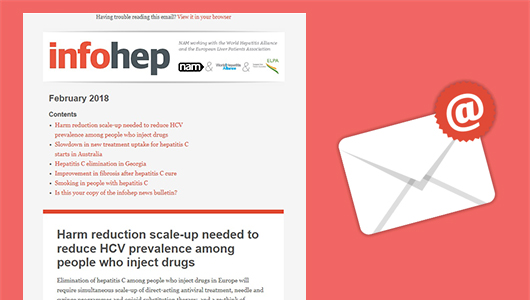
Gerd Altmann/Shutterstock.com
The American Association for the Study of Liver Diseases (AASLD) has issued preliminary guidance for liver specialists on managing COVID-19 in patients with liver disease, based on data published up to late March.
COVID-19 is the disease caused by SARS-CoV-2, the new coronavirus identified in China in January 2020. SARS-CoV-2 causes a spectrum of clinical illness ranging from mild symptoms (cough, fever) to severe pneumonia, lung damage and death.
People with pre-existing health conditions including chronic kidney disease, cardiovascular disease and chronic obstructive pulmonary disease are at higher risk of developing serious illness that requires hospital admission and ventilation.
Liver enzyme elevations and liver injury
People with pre-existing liver disease were more vulnerable to liver damage if infected with SARS, a related virus. Although it is plausible that the same might hold true for the new coronavirus, there is little evidence about its effects in people with liver disease, AASLD concludes.
The AASLD briefing notes that liver injury occurs more often in severe COVID-19 cases and that liver enzyme elevations in mild COVID-19 cases have usually been transient. Elevated liver enzymes in people with COVID-19 should prompt testing for hepatitis B and C, AASLD suggests.
Experimental agents that are being tested as treatments for COVID-19 may have liver toxicities. Although raised liver enzymes should not be a bar to experimental use of these drugs, regular monitoring of liver enzymes should form part of any experimental protocol for COVID-19 treatment.
Hepatocellular carcinoma
In cases of suspected hepatocellular carcinoma (HCC) or ongoing treatment, specialists should try to minimise clinic visits for patients and carry out virtual consultations. However, imaging should not be delayed too long; two months might be reasonable, depending on the patient and facility. Treatment for HCC should not be delayed.
People awaiting transplant
Limit the number of people coming into clinics for transplant evaluation and prioritise visits by those with HCC or those with high MELD scores who are likely to benefit from immediate listing. Try to move as much management of pre-transplant patients as possible online.
Consider RNA testing of recipient and donor when organs become available. Try to test specimens from multiple sites to overcome lower sensitivity of nasal and pharyngeal specimen testing. People who test positive for SARS-CoV-2 are medically ineligible for organ donation.
Transplant
Liver transplantation during the COVID-19 crisis will be challenged by a shortage of ICU beds. Nevertheless, liver transplants should still go ahead, and services may need to prioritise the patients most likely to die on the waitlist. It is not clear if immunosuppressed people are at higher risk for severe COVID-19. However, immunosuppressed people are known to be more likely to acquire SARS-CoV-2 and are more infectious and have higher viral titres than immunocompetent people once infected with SARS-CoV-2. These factors need to be considered when making decisions about immediate or deferred transplantation.
Post-transplant and immunosuppression
It is not clear if immunosuppressed patients are at higher risk for severe COVID-19. Evidence from outbreaks of SARS and MERS shows that post-transplant immunosuppression was not a risk factor for death. Immunosuppressive medication should not be halted in COVID-19 patients. Post-transplant patients should minimise contacts and continue to practice all hygiene measures recommended for post-transplant patients.
If post-transplant patients acquire SARS-CoV-2, prednisone dosage reduction should be considered, as well as dose reductions for other immunosuppressants such as azathioprine, mycophenolate or calcineurin inhibitors. Any dose reduction however must be decided by the treating doctors and certain doses will usually be vital for patients. The European Reference Network recently warned liver patients on immunosuppressants to not reduce or stop their immunosuppressants without seeking advice by their specialist, as this may cause complications such as hepatitis flares or even organ failure.
There is speculation that immune reactions may play a role in severe and worsening COVID-19 lung disease. However, it is unknown at this time if immunosuppressants have any impact on COVID-19, and if the impact would be positive or negative. Therefore, the World Health Organization recommends avoiding the use of corticosteroids for treatment of COVID-19 unless indicated for another purpose.
AASLD advises to consider drug-drug interactions with immunosuppressive drugs if using experimental agents to treat COVID-19. Lopinavir/ritonavir is not proven as an effective treatment for COVID-19 to date but is being tested in several large randomised clinical trials. Lopinavir/ritonavir is a potent inhibitor of CYP3A4, which is involved in the metabolism of calcineurin inhibitors, sirolimus and everolimus. AASLD also recommends to consider a dosage reduction of tacrolimus to 2-5% of baseline dose due to this drug-drug interaction.



Connect with infohep on Facebook: Keep up to date with all the latest news and developments.
Follow infohep on Twitter for links to news stories and updates from infohep.org. Follow us at www.twitter.com/infohep.
Follow all the infohep news by subscribing to our RSS feeds.